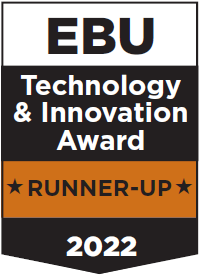
Imagine letting the viewers’ quality requirements in distribution determine the production format and bitrate. And imagine unifying the production environment with the means of distribution in the same equipment, using the same software.
One of the biggest challenges for broadcasters today is how to get more content – and more relevant content – produced while maintaining budgets. And the competition from global video and internet services is increasing.
SVT sought a solution that would combine lower costs with the ability to adopt more commonly available technology. We also wanted to be able to leverage the continuous technology advancements we see in mobile phones, the internet, cloud services and CPU/GPU development.
Agile organizations
In March 2021, SVT and Agile Content started a journey to a solution that today is capable of receiving several different signals, whether NDI, SRT or SDI. And that is just the start of this solution. It also incorporates operational transformation, requiring fewer specialists, creating more agile organizations and applying DevOps-inspired methodologies, but also enabling a distributed workforce.
In terms of benefits, to lower costs and increased flexibility of working remotely and distributed, we can also add increased relevance of content: the solution leads to more local content, faster reaction times for breaking events and the possibility to develop new formats for an audience increasingly consuming content online and on mobile devices.
We have achieved all of this by embracing a fully software-based approach using standard internet and cloud protocols. It uses pure software in combination with workflows inspired by the principles of software-defined networking (SDN), with separated production and distribution video flows and enabling true remote and distributed production.
Using standard internet protocols introduces flexibility to run on a variety of standard platforms and to use a variety of cameras, including mobile phones. Also, building the production pipeline in the cloud using standard protocols allows for fusion between broadcast and other internet concepts and applications from, for example, gaming and AI, catering for new television formats.
Open source
Elastic frame protocol is a new open-source protocol created by Agile Content to achieve the all-important source synchronization. It was developed to use the advantages of IP to adapt quality to preferences and available bandwidth, and to introduce synchronization between cameras, including mobile phones.
This joint project, running for just over a year now, has enabled SVT to take significant steps towards a more digital production model, moving from hardware to software. After several proofs of concept, the first productions on the platform are planned for summer 2022 and, thanks to the innovation- friendliness of the cloud, several further enhancements are planned for late 2022 and onwards. These include introduction of AI and 3D engines for mixing and rendering.
The new platform represents a first big step towards a software environment that is not tied to producing according to a single standard. The goal is multi- format, multi-protocol, multi- bitrate software-based production.
This article was first published in issue 53 of tech-i magazine.

